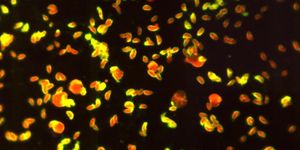They're Serious: Ig Nobel-Inspired Researchers Re-examined Penguin's Bodily Fluid Dynamics
If this year has been nothing but stress and you are looking for a venue for some "serious" laughter, this is what you need.
In the latest research, two scientists at Japan's Kochi University reported their peculiar study, in which fluid dynamics and penguin digestive physiology intersect. By carefully modeling and calculating the projectile trajectory of penguin feces, they came to the conclusion that the pressure within the bowel of these little polar critters is significantly higher than first estimated.
By now, you might start to question the motives of these scientists. But rest assured, this study was done with a Nobel level seriousness, Ig Nobel that it.
Back in 2005, the committee of Ig Nobel, a royally satiric counterpart to the real prize, handed the award in fluid dynamic to two European scientists. The curious duo looked into the footages and photographs of penguin defecation, and calculated the pressure inside a penguin body during their waste-offloading process. They were surprised to find that it was significantly higher than that of an average human. Their paper was accepted for publication (you bet!) in the journal Polar Biology in 2003.
The Japanese scientists noticed that the Ig Nobel study missed some important detail of penguin behavior. According to the first-hand experience of zoo and aquarium maintenance workers (who have been subjected to surprise poopy attacks), these cleanliness-focused birds often defecate on a high ground, which can result in a totally different angle of ejection and trajectory of the penguin feces. Only under a few scenarios, penguins defecate wherever they can (still away from their own nest), such as when they are nesting.
By adjusting the flight path, the Japanese scientists recalculated the distance that feces can travel using Newtonian mechanics, which can be as far as 1.34 meters (4.39 feet). They also re-estimated the pressure within a penguin's rectums to be between 8.75 and 28.2 kilopascal, 1.4 times higher than previously thought.
This remarkable (no joke) discovery is now available online with the preprint server arXiv.
If you are still curious about this almost unknown aspect of penguins, check out the following video from BBC Earth and learn more.
Penguins Might be Cute, but They're Also Super Gross (BBC Earth)
Source: arsTechnica









